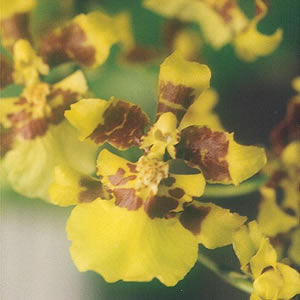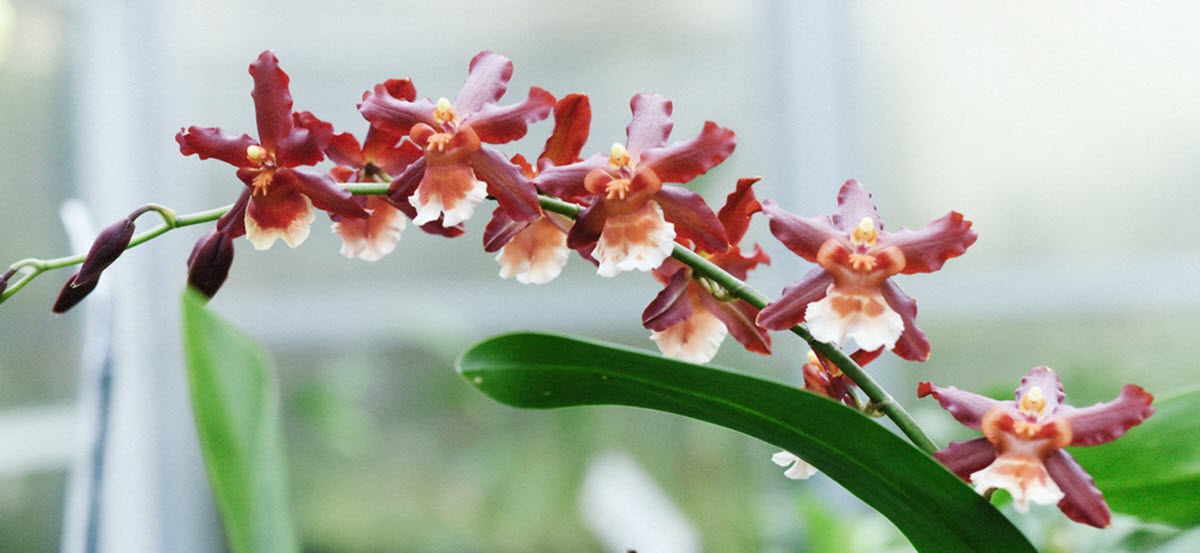Oncidium Orchid Care
Contents
Oncidium is a genus in the orchid family that currently contains over 300 different species. This genus has undergone a lot of changes and reclassification is still take place. Some experts have suggested that the genus should be split and divided into several different genera.
Oncidium orchids produce pseudobulbs with one to three leaves and at the base of these pseudobulbs there are several basal bracts. Oncidium orchids can also be identified on the column wings and the presence of an intricate callus on the lip of the flower.

Oncidiu altissimum orchid
Oncidium orchids are easily hybridised with Odontoglossum orchids. Together with other orchids from closely related genera, such as the Osmoglossum, Odontoglossum and Tolumnia orchids, they form the famous Oncidium alliance. The Oncidium alliance is today extremely popular in the floral trade and currently contains hundreds of thousands of different hybrids.
Potting medium
A majority of the Oncidium orchids grow on trees (epiphytes), but some species grow on stones (lithophytes) or on the ground (terrestrials). By learning more about which type of orchid your orchid is, you will be able to more accurately determine which type of potting medium it would prefer. Generally speaking, most Oncidium orchids will do well in fine or medium orchid bark.
Repotting a Oncidium orchid
Oncidium orchids should be repotted every second year, preferably as soon as possible after flowering.
Temperature
Most Oncidium orchids and their hybrids prefer daytime temperatures under 85°F (29°C). The nights should be considerably cooler, ideally in the 50-60°F (10-15.5°C) temperature range. If the daytime temperature goes up, try to hamper possible side effects by increasing the air humidity around your Oncidium orchid.
Light
The Oncidium orchid needs a lot of bright light to thrive. For the best possible Oncidium orchid care, place the plant in an east window, or in a south window with light shade. The plant should ideally be protected from mid-afternoon sun. Most Oncidium orchids can cope with direct sunlight during the morning and late afternoon as long as they are gradually acclimatized to it. If an Oncidium orchid receives to much light the leaves can turn into a reddish green shade. A dark green shade instead an indication of light deficiency. Strive to keep the leaves of your Oncidium orchid light green.

Oncidium “Fire Cracker” – picture by Karl Thomas Moore
Watering
Oncidium orchids are often found in environments subjected to seasonal drought, such as southern Florida, the Caribbean, and certain parts of Mexico and South-America. Despite this, Oncidium orchids prefer to have their medium kept moist. They should of course never be left in standing water, but unlike many other orchids they do not prefer to have their medium dried out completely between waterings. The higher the temperature, the more water should be given to your Oncidium orchid. During the summer you might have to water it every second or third day. Ideal Oncidium orchid care involves watering the plant early in the morning to make it possible for the foliage to dry off before sunset.
Nutrients
When it comes to nutrients, the ideal Oncidium orchid care depends on the season. During spring, summer and early fall your Oncidium orchid will appreciate more fertilizer than during fall and winter. The proper type of fertilizer greatly depends on the potting medium. If you use a potting medium consisting chiefly of inorganic aggregates, tree fern and charcoal, a 20-10-20 fertilizer is recommended. If you instead use fir bark as potting medium, a 30-10-10 fertilizer is better. Never give your Oncidium orchid large doses of fertilizer, regardless of season. It is much safer to use a weak solution and spread the monthly dose over several servings. Between each serving, it is important to water through the medium with ordinary water to prevent salt build ups.
Oncidium orchid trivia!
One of the first orchids to be cultivated at the renowned Kew Royal Botanical Gardens was an Oncidium orchid. Oncidium altissimum grows in the Lesser Antilles Islands of Martinique, Trinidad and St. Vincent and was brought to the United Kingdom by Captain Bligh. Captain Bligh is most famous for surviving the Mutiny on the Bounty by navigating an overcrowded 23 foot (7m) open launch 6710 km to Timor using only his pocket watch and a sextant to establish the course.